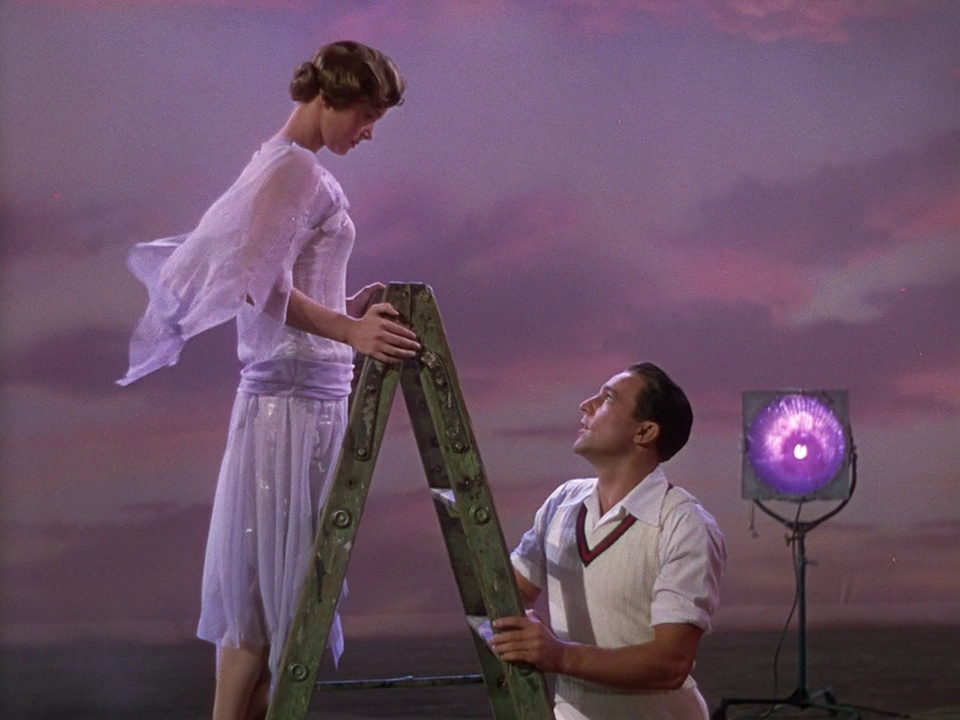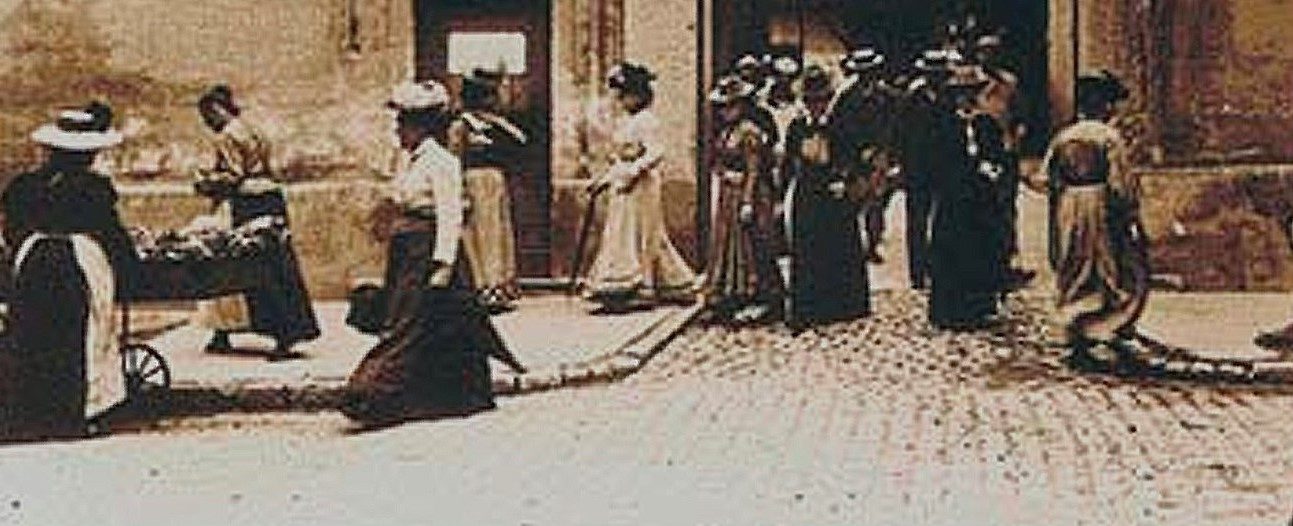United States, 1952
Directed by Gene Kelly and Stanley Donen
With Gene Kelly (Don Lockwood), Donald O’Connor (Cosmo Brown), Debbie Reynolds (Kathy Selden), Jean Hagen (Lina Lamont)

The plot is based on the momentous technical and artistic change in the film world brought on by the advent of the synchronized sound and voice recording in 1927 with the release of “The Jazz Singer”. Overnight the possibilities available to filmmakers were expanded and Hollywood studios were faced with fresh technical challenges while actresses and actors had to adjust – or perhaps to quit the business. Talkies were set to run the show forever, enabling by the way a new genre, the musical, to appear.
This 1952 musical is a nice case of Hollywood revisiting its history and railing at its flaws in a joking and self-deprecating fashion. From the start it acknowledges how fabricated stardom is, as flashback vignettes constantly belie the narrative that Don Lockwood tells a journalist before the premiere of a film he has just shot with his favored partner Lina Lamont. The premiered film itself looks like a spoof of a typical silent flick while the disharmony between the two leads is relentlessly highlighted. A chance encounter Don Lockwood had later with a young lady, Kathy Selden, drives further the point about the utter lack of truth and genuineness marring human relations and attitudes in Tinseltown: their talk gets testy and Kathy Selden tells him that movies are just dumb shows and that he is no real actor – although, ironically, it later appears that, contrary to her claims, she is not an actor either, but just a showgirl.
The unexpected success of “The Jazz Singer” compels the studio employing Don and Lina to alter the shooting of their new film, a period piece set in France as the 1789 Revolution begins; but a preview of the end result shows neither the actors nor the studio are up to the new technical challenge. This worsens the doubts and fears Don already has; however, backed by his long-time friend and artistic partner, Cosmo Brown, and by Kathy, now on the studio’s payroll and loved by Don, he plucks up his courage again; the three of them find a solution to improve the film and to solve the huge problem raised by the shrieking, squeaking, and silly voice of Lina (and her talent’s limits). So the period piece becomes also a musical and Kathy is going to dub Lina, who would never be informed of the trick.
Alas, Lina finds out the truth and tries to exact revenge; but she is eventually humiliated while Kathy triumphs; the final images show Don and Kathy living and working together in perfect harmony and bliss, ready to bask in the success of their new movie called, what a surprise, “Singin’ In the Rain”. This is a perfect happy ending: in stark contrast with the beginning, their Hollywood life involves no more lies and no more tricks; actual facts and feelings truthfully match with the public image.
The first number of the film has pointed to this desire of being honest with the public. It features Cosmo Brown fooling around with props and bumping into the walls of the sets as he sings “Make’ em Laugh”, signal what the film is all about – entertainment, of course, but also how hard it is to handle the right tools to achieve the goal (the difficulties of filmmaking are already very much on Don’s mind at this point of his story, as he no longer trusts his skills). Some of the following numbers are extended and powerful visual flourishes illustrating the new entertainment feats studios can now offer with the synchronized sound, in particular the sequence near the end purporting to show the conclusion Don has imagined for the new version of his film and which he is describing to the studio chief, an elaborate, gorgeous and riveting turn that showcases the talent of Cyd Charisse (who would become a star on her own right one year later with “The Bandwagon”).
The other numbers highlight Don’s sentiments in relation with his best friend and the woman he fell in love with. The most famous and amazing of those numbers is shot under a pouring rain after Kathy and Don kissed for the first time. It allows actor, dancer, and director, Gene Kelly to sing the title song as he dances and acts in a seemingly never-ending whirl, a flawless series of steps that are simultaneously playful and elegant, droll, and just awesome. The genuine sense of freedom and joy he injects in every gesture and every frame fully impacts the screen and the scene has become an emblem in the collective mind of what a great musical can achieve.
The song is actually the starting point of the film, at least according to the titles; the whole story seems to be built around the idea of using the famous song written and composed probably in 1927 (what a coincidence); as Kelly gets merrily drenched under the camera he and Stanley Donen move around in a gracefully slick manner, the movie celebrates the reason of its existence and the power of its genre. This good-natured self-examination of the American film industry’s artists and creators demonstrates at the same time their amazing talent at reworking and reinvigorating the elements of their trade. Their skills are constantly honed to give the best to the audience whatever the circumstances; and the success of “Singin’ in the Rain” would be the deserved reward for Kelly’s dedication and hard work (and a superb vehicle to his own charm and artistic ambition, too). With him and his close collaborator Donen, cinema, by tackling its own history, reminds the audience what an inexhaustible creative force it is, images feeding off images endlessly, magically, movingly.

